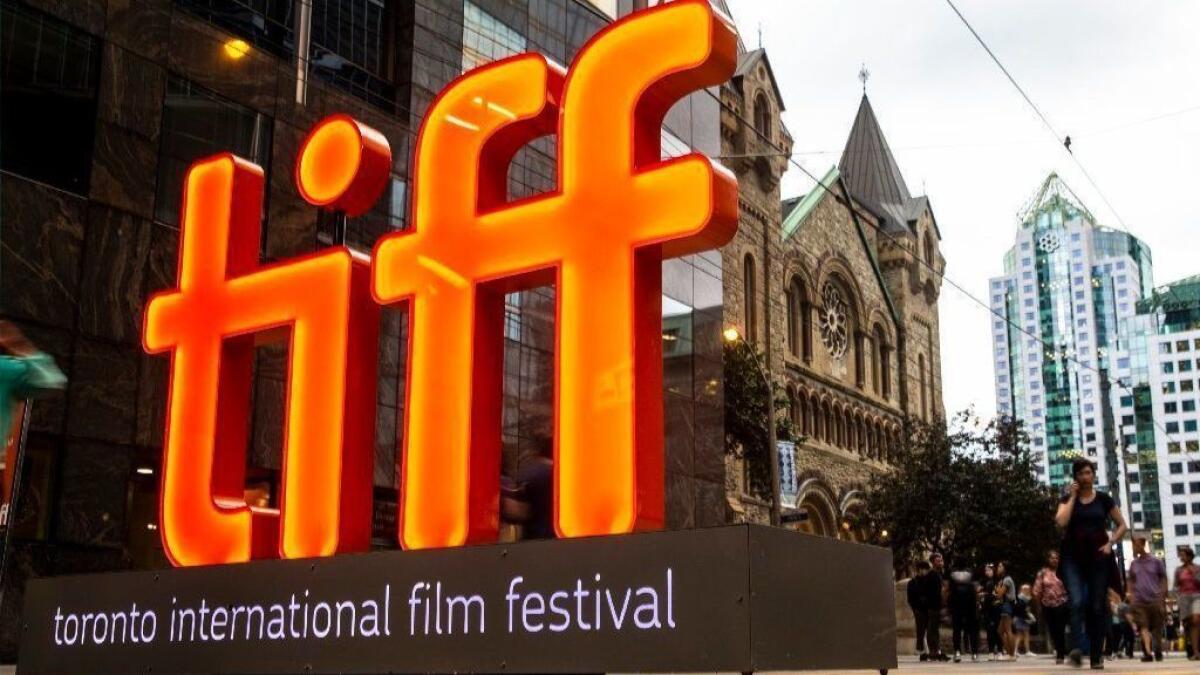Following Toronto Film Festival’s media diversity initiative, critics say there is more work to be done

When actress Brie Larson used her platform at Women in Film’s Crystal + Lucy Awards this summer to advocate for a more diverse critics body, she brought attention to an ongoing conversation about the industry’s treatment of critics and entertainment journalists of diverse backgrounds. She also announced that premiere festivals including Sundance and the Toronto International Film Festival had pledged to do their part by inviting more underrepresented media.
Two weeks after this year’s TIFF however, critics who were part of the inaugural initiative say there is still more work to be done industry-wide.
“It was a great experience” said Jaleesa Lashay, a freelance critic based in Los Angeles, “but because TIFF sent us there, we felt this added pressure to make sure we were getting [article and review] placements. The reality is, we know a lot of the reviews that got published and the coverage that came out of the festival are in [traditional industry] publications and they still sent their white men to cover it.”
‘There is room for everyone’: 14 film critics on making media more inclusive
The festival level is often where independent movies have make-or-break premieres that determine everything from acquisition options to awards season buzz. Early reviews and social media chatter set the tone for how a film is discussed, and sometimes whether it lands a distribution deal — or not.
Even studio-backed Hollywood fare, mostly films on the hunt for awards, debut at festivals like TIFF where festival-accredited critics help establish the cultural conversations integral to a film’s success.
It’s OK if outlets have their go-to people, but they too can be challenged to have diverse representation.
— Jaleesa Lashay
That’s why when TIFF announced its plans via Larson’s not-without-controversy speech in June, the industry took notice.
“It really sucks that reviews matter, but reviews matter,” Larson said, speaking from experience as her indie drama “Room” was propelled to the Academy Awards by strong critical acclaim. “Good reviews out of festivals give small independent films a fighting chance to be bought and seen. Good reviews help films gross money. Good reviews slingshot films into awards contenders. A good review can change your life. It changed mine.”
Focusing on the need for more diverse critical voices, Larson added: “I know that this means that my work will be shown, digested, discussed by a variety of people, not just a singular perspective. I want to know what my work means to the world, not a narrow view.”
At the time, Sundance committed to granting 20% of top-level press badges to underrepresented journalists for its 2019 festival. TIFF pledged to increase its own accredited underrepresented media by 20%.
Those under the “underrepresented” label included white women, critics of color, disabled critics, as well as those from LGBTQ communities.
“It’s something as an organization that we’ve always worked well about in this space,” said Andrea Grau, TIFF’s vice president of public relations. She noted that 30% of the festival’s media already comes from outside of North America.
“We’re really aware of our role” in launching conversations around films, she said, and want to “ensure the media corps is reflective of the people that live [in Toronto], one of the most multicultural cities in the world.”
“We’ve done it on the programming side for some time and we knew there was work to be done on the media side.”
Working with organizations like the African American Film Critics Assn. and GALECA: The Society of LGBTQ Entertainment Critics, TIFF reached out to underrepresented critics to field their interest in attending the festival, knowing they could, at minimum, assist with access to press and industry screenings, red carpets and press conferences.
Lashay received an email from the festival that led to a number of phone calls about how she might be able to make the trek to Canada. In a final call before her press credentials were approved, the festival told her they would assist with covering a few nights lodging and flight reimbursement.
Danielle Solzman, a freelancer based in Chicago who self-publishes reviews on her own site, Solzy at the Movies, had reached out to the festival herself. Knowing that she couldn’t afford the trip on her own, and that the Jewish holiday Rosh Hashanah coincided with the festival, she was interested in ways to cover it remotely. But when her credential was approved in July, she mentioned to festival organizers that she may need assistance attending. As TIFF was securing funds to support, Solzman “wasn’t taking anything as guaranteed and started a GoFundMe,” she said.
(She notes that, based on her budget, having to buy a flight and wait for reimbursement from the festival would’ve prohibited her from attending.)
She raised $750 of a $700 goal, and AirBNB reached out with a $500 promo code to cover lodging.
A total of 185 critics from underrepresented communities attended the 2018 festival through TIFF’s initiative. Many of them were supported financially through funding provided by TIFF and its sponsors to cover flights and limited hotel stays.
Inviting them to come to a festival our size and not supporting them, we wouldn’t be doing our jobs appropriately.
— Andrea Grau
On the ground, both Lashay and Solzman say they felt supported and welcomed, not like a fish out of water without direction.
“I definitely felt like I was getting attention in a good way, and it felt genuine,” Lashay said, noting that her point of contact helped her navigate the festival’s sometimes-confusing ticket request system. “Because it’s one thing to say we need to be there. But we’ve been on the carpets and in these rooms and felt the disrespect. I didn’t feel like an outsider [at TIFF] and that is getting it right. It felt like a genuine change they were actually trying to be part of.”
Grau added: “Inviting them to come to a festival our size and not supporting them — we wouldn’t be doing our jobs appropriately.”
Both Lashay and Solzman were also generally pleased with the access they received to talent for off-carpet interviews at junkets. Still, they note that the fight for media inclusion is not yet won.
Simply put, “Larger outlets need to provide more opportunities for diverse writers,” Solzman said.
Lashay, who has primarily worked for publications with black audiences, agreed. She highlighted how online conversations around a film like Barry Jenkins’ “If Beale Street Could Talk,” for example, captured sentiments missing in reviews from industry trade publications.
“You felt it online, but you want that to translate into the writing as well,” she said. “While some people will follow us and read on Twitter, people who love film are going to read what Variety, the Hollywood Reporter and the L.A. Times have to say.
“We all know why it’s important to have us there at the festival, but if that can be echoed in the mainstream bylines coming out of it, that would be great. It’s OK if outlets have their go-to people, but they too can be challenged to have diverse representation.”
Get your life! Follow me on Twitter (@TrevellAnderson) or email me: trevell.anderson@latimes.com.
More to Read
Only good movies
Get the Indie Focus newsletter, Mark Olsen's weekly guide to the world of cinema.
You may occasionally receive promotional content from the Los Angeles Times.







